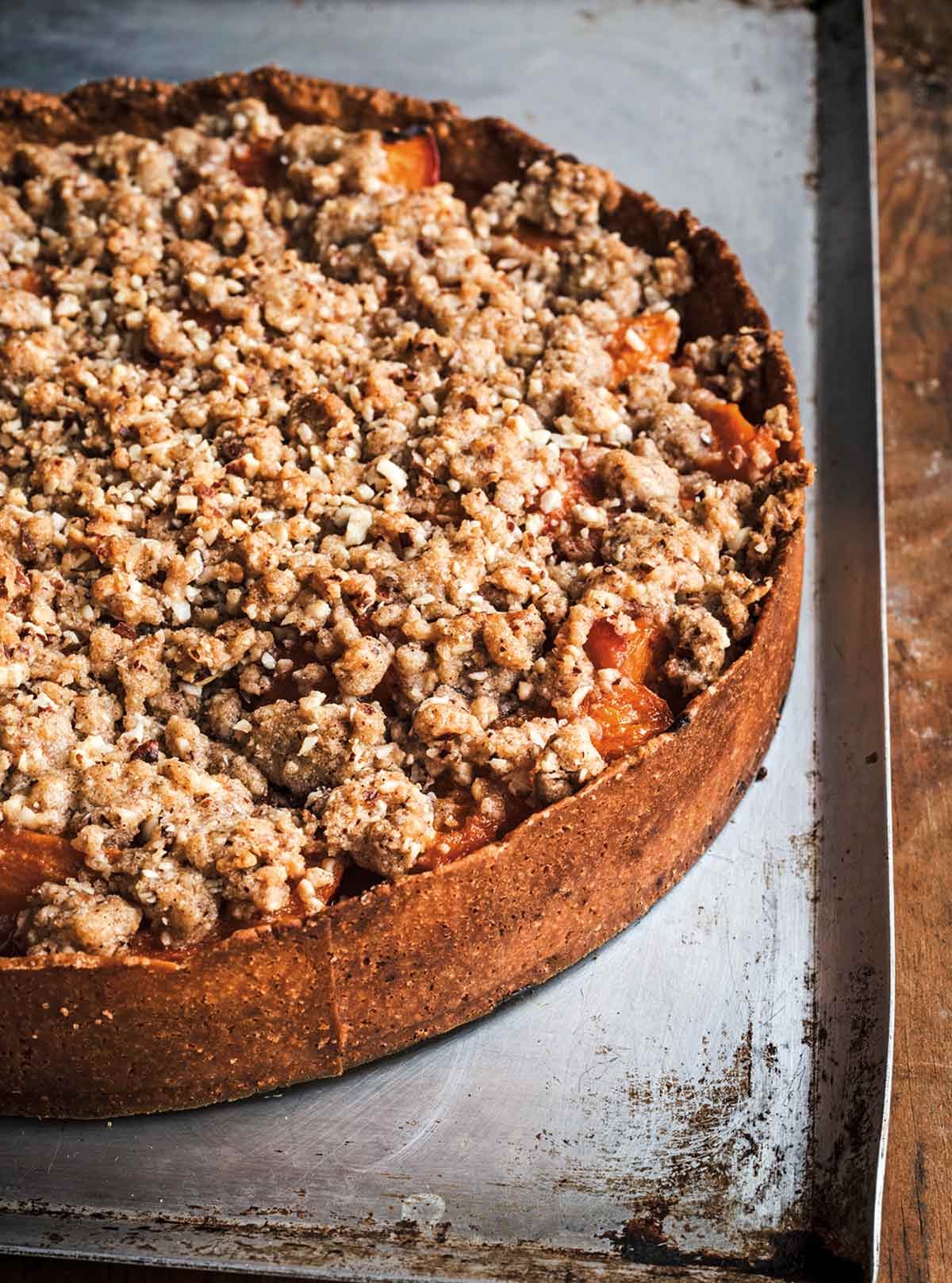
One dessert that’s easy to make at home, which the French have adopted from the English, is le crumble. Because I am a home baker, I don’t have any problem turning this into a tart with homemade dough when fresh apricots from Provence become abundant in the Paris markets each summer. The first time I saw a fresh apricot (I had only known the dried ones) was when I was baking in upstate New York in the 1980s. I still take the time to treat the apricots right and make this tart often.–David Lebovitz
Want to Save This?
HOW LONG WILL AN APRICOT TART LAST?
While David Lebovitz’s apricot tart is a thing of beauty and should be made the day that you plan to serve it, rest assured that your leftovers will last up to 3 more days, in the fridge. Wrap well, or place in a covered container, and store, sneaking forkfuls whenever you please until it’s gone.
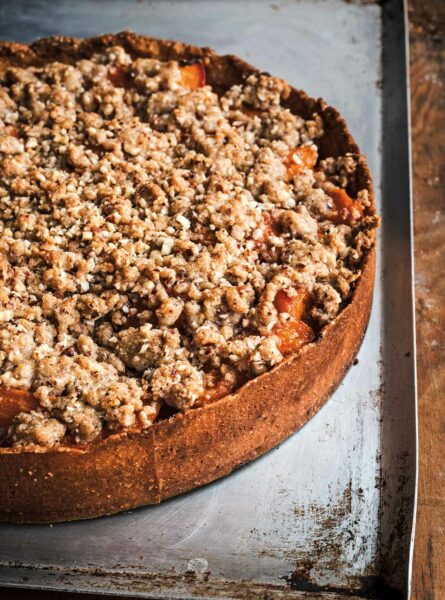
Apricot Tart
Equipment
- 9- or 10-inch springform pan
Ingredients
For the pastry crust
- 6 tablespoons (3 oz) unsalted butter, chilled, plus more for the pan
- 1/2 cup granulated sugar
- 2 large egg yolks
- 1 1/4 cups all-purpose flour
- 1/2 teaspoon sea salt or kosher salt
For the crumble topping
- 3/4 cup whole almonds
- 1/2 cup all-purpose flour
- 1/3 cup packed light brown sugar
- 1/2 teaspoon ground cinnamon
- 1/2 teaspoon fine sea salt or kosher salt
- 6 tablespoons (3 oz) unsalted butter, chilled and cubed
For the apricot tart filling
- 2 pounds ripe, fresh apricots, pitted and quartered
- 3 tablespoons granulated sugar
- 1 tablespoon cornstarch
- 1 teaspoon vanilla extract
- 1/4 teaspoon almond extract
Instructions
Make the pastry crust
- Place the chilled butter in the bowl of a stand mixer fitted with the paddle attachment and let it sit for 10 minutes so it softens slightly.
- Add the sugar to the butter and beat on medium speed just until no visible lumps of butter remain, about 2 minutes. Add the egg yolks and mix just until combined. Then add the flour and salt and mix until the dough comes together. (You can also make the dough in a bowl using a spatula and a little moxie.)
- Coat the bottom and sides of a 9- or 10-inch springform pan with butter. Use the heel of your hand to press the dough into the bottom of the pan and a little less than halfway up the sides. Try to get the bottom as even as possible, not because anyone will see it, but because it will bake more evenly. Put the pan in the freezer for 30 minutes.
- Preheat the oven to 375ºF (190ºC).
- Line the dough in the pan with aluminum foil and a single layer of pie weights or dried beans. Bake for 20 minutes. Remove the foil and pie weights or beans and bake for another 5 to 10 minutes, until the tart shell is browned.
Make the crumble topping
- Pulse the almonds, flour, brown sugar, cinnamon, and salt in a food processor until the almonds are broken up into very small pieces. Add the butter and pulse just a few times, until the mixture looks sandy. Continue to pulse just until the pieces of butter start clumping together. (If you don’t have a food processor, you can make the crumble topping by chopping the almonds finely and mixing the ingredients with a pastry blender or by hand.) Cover and refrigerate the crumble topping.
Make the apricot tart filling
- In a bowl, mix the apricots with the sugar, cornstarch, vanilla, and almond extracts. (Don't make the filling more than just a few minutes in advance, as the apricots may become too juicy.)
Assemble the apricot tart
- Dump the apricot filling into the tart shell and spread it out evenly. Then strew the crumble topping evenly over the apricots. Bake the tart for about 50 minutes, until the topping is nicely browned. Let cool on a wire rack for a few minutes, then run a knife around the outside of the tart to separate it from the pan. Let it rest for 30 minutes more, then remove the sides of the pan and let the tart cool. The edges may look rather dark but should taste fine, not burned. Serve warm or at room temperature.
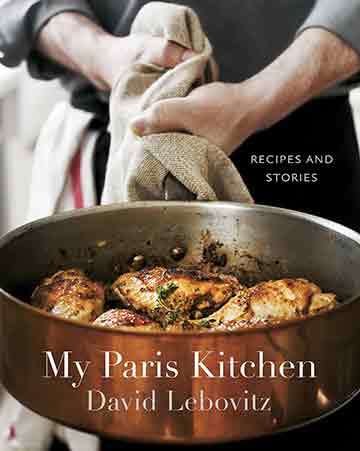
Nutrition
Nutrition information is automatically calculated, so should only be used as an approximation.
Recipe Testers’ Reviews
This recipe makes for an apricot tart with excellent flavor and really good texture. The flavor of the apricots, along with the hint of almond extract, gives it an almost exotic edge. This filling really pairs perfectly with a rich buttery crust and crumble filled with yet more butter along with brown sugar and almonds. We served it once with vanilla ice cream and once with lightly sweetened whipped cream. It’s something I would make again in a heartbeat.
That said, the pastry crust is delicious, but the method of applying it to a springform pan with high edges is needlessly tricky and fiddly. I took a bit of time to try getting it as evenly thick as possible while at the same time getting it halfway up the edges of the springform pan. Why not use a deep tart pan with a removable bottom? We can just chill and roll the dough then fit it in the pan. Simple, neat, and much easier to manage. I’ll be doing that next time.
Be very diligent in getting the aluminum foil as flat as possible in the pan to cover the dough. This is especially true in the corners. Also, remove the beans (or weights) first and then carefully remove the foil (as opposed to just picking up the foil with the weights in it) before finishing baking it. I had a few wrinkles on one side and when I attempted to remove the foil I ended up with a few tears. I had saved a nugget of dough and used that to patch it up.
The good news is that the tart holds together very well once un-molded. This isn’t a tart that keeps well. It was delicious after an hour out of the oven. The next day though, while the flavor was still great, the pastry and texture suffered from too much liquid that seeped from the juicy apricots. I would say this is something that should be served within 4 to 6 hours at the most for best results. The edges were dark brown, but we loved them. They were not burnt and tasted almost caramelized. This again worked great with the juicy apricots and that slightly bitter hint of almond extract.
I couldn’t resist trying it again this weekend with my changes and figured I’d share my results. I loved the flavors and textures of this tart but was not crazy about the method of using the springform pan with tall sides. I didn’t like patting the dough in the pan as opposed to simply rolling it into an actual tart pan. So that’s what I did. I changed nothing other than switching to a regular tart pan with a removable bottom and rolling the dough evenly and laying it in there. This worked superbly, and I’ll use this method when I make the recipe again. The one small downside is that I had some (but very little) boil-over. The tart didn’t suffer at all and looked great, but I’d recommend putting a baking sheet underneath the tart pan.
Ah, the often-overlooked apricot—how we really should pay you more attention! Leave it to the French to know how to celebrate the apricot’s tartness with the rich elements of butter and almonds and not give in to the American urge to mix in sugar by the cupful. The apricot tart’s crust was substantial and easily stood up on the dessert plate. The crunchy topping was divine, working to both cut the tartness of the apricots and impart its nuttiness.
What I love about apricots, unlike peaches, is that they are so easy to prepare. Just remove the pit and they’re ready–no need to peel. I purchased slightly fewer apricots than called for by the recipe. (I purchased 7 apricots, which weighed approximately 1 1/3 pounds.) I don’t think you’d need the full 2 pounds unless you really have a hankering for apricots. The dough came together without a fuss. A minute in the mixing bowl and it was ready to go. It was easy to form into the pan and created a pretty thick crust that didn’t crumble when plated.
The cooking times appeared accurate. I think this recipe is really unique and would really fit the bill if you are looking for an elegant dessert recipe that isn’t overly sweet. However, for this reason, I think its appeal will largely lie with adults.
If you like your tarts tart, then this apricot tart recipe is for you. The crust is like a perfectly baked buttery sable cookie. It does get quite brown after the two baking periods, but it doesn’t burn. Be sure to make both the bottom and the sides of the crust nice and even so they’ll bake evenly. The dough may thin out when you press it up the sides, but try to make it almost as thick as the bottom crust to make it less likely to overcook.
I mixed the dough for 1 minute, and it didn’t really come together, but it appeared to be well-mixed, so I decided to press it into the pan. The baking time of 50 minutes was perfect. As soon as the filling is mixed, the apricots begin to exude their juices, so I suggest that you immediately assemble the tart after the filling is mixed together.
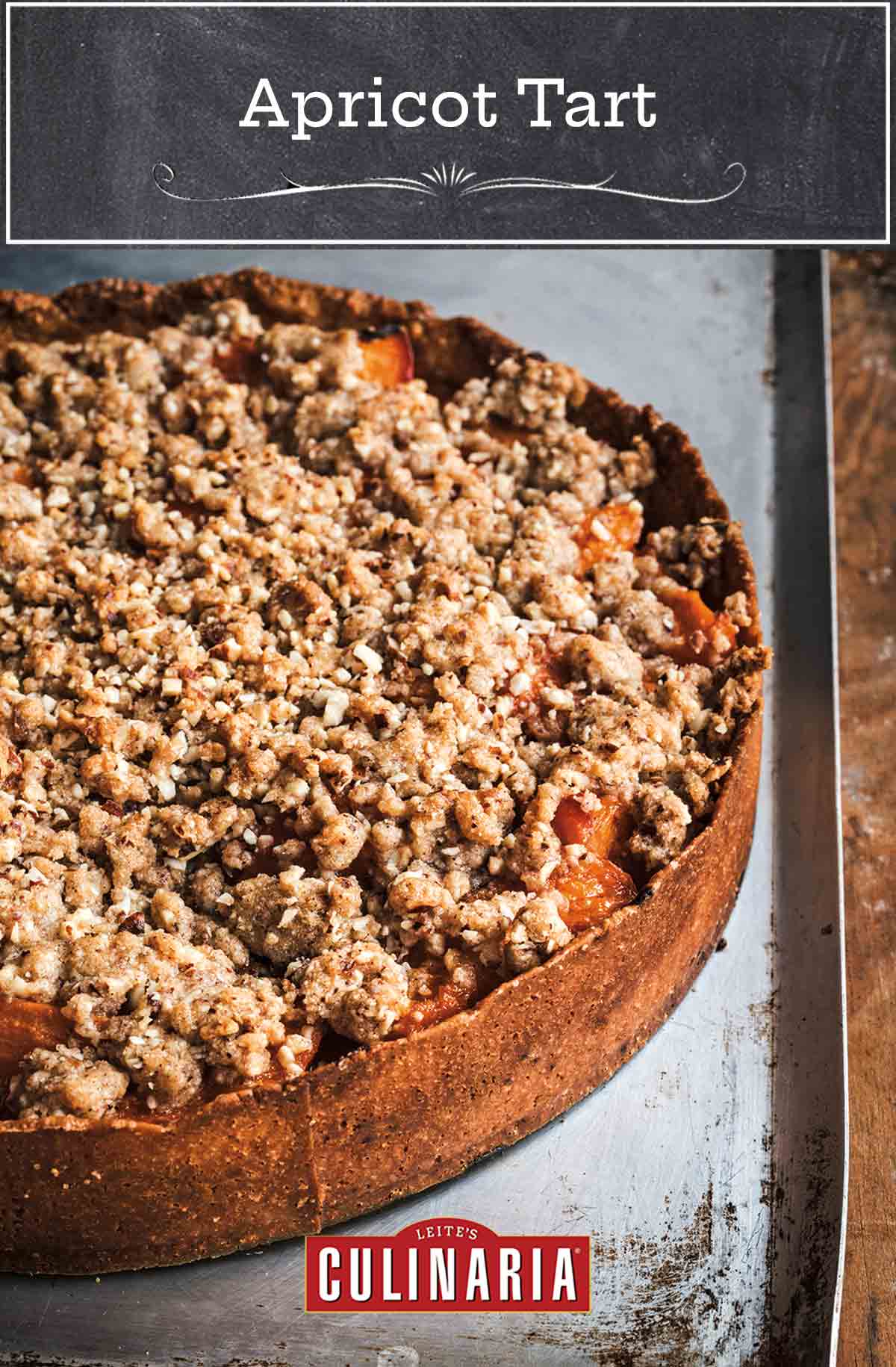

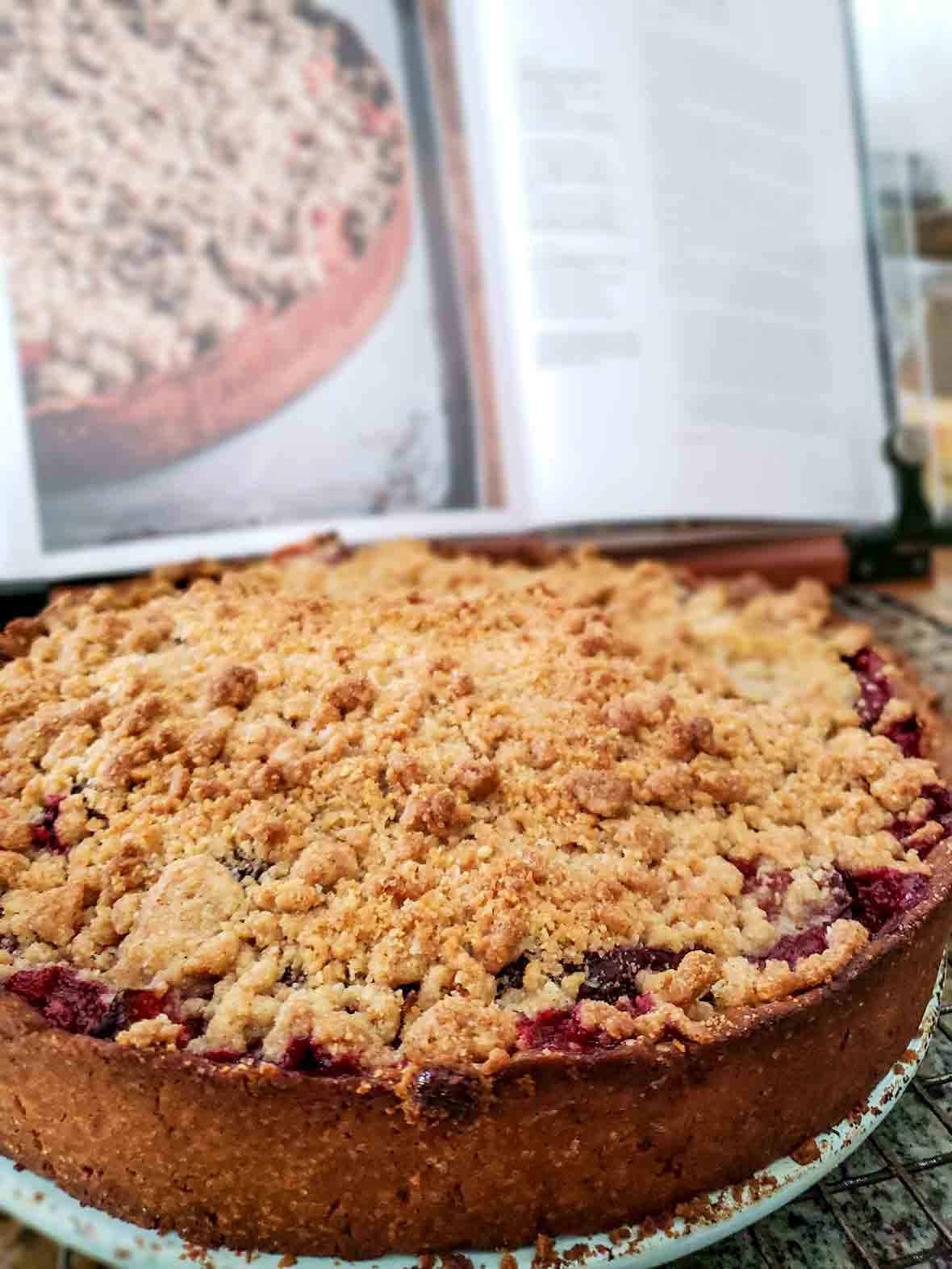











Apricots are so seasonal – could this be made and frozen for a bite of summer in the winter?
Sandra, the quality of the tart would suffer. I’d suggest making it fresh in the winter using frozen apricots. I think you’d get a better result.
I really wish that I could also make the same recipe as like this at home but I’m still keeping this recipe for the future 🙂
It’ll be there for you when you’re ready, Cherry!
I made this with the following changes: After parbaking the pastry, I painted the bottom and sides of the pastry with melted white chocolate and let it set. This helps prevent the pastry from being soggy the next day should there be any leftovers. I wanted more crumble, so this is what I made:
1 1/4 cups flour
1/2 cup dark brown sugar
1/4 cup white sugar
1 T Indonesian cinnamon (aka Korintje Cinamon) AND YES IT MAKES a DIFFERENCE
1 stick melted butter, cooled a bit
1/2 tsp sea salt
Combine all in a bowl, stir, and set aside for 1 hour. Break up with your fingers. Toast 1 cup almond slivers and work these into the crumble. Spread over the apricots.
I’m just a crumble fanatic. I also like this with creme fraiche instead of ice cream or whipped cream. I made 4 of these with those changes and the creme fraiche for a party and there was not a crumb left!
Hey Diane, that’s what recipes are for—to turn into your own. So glad this lovely tart was able to bring some inspiration to you…